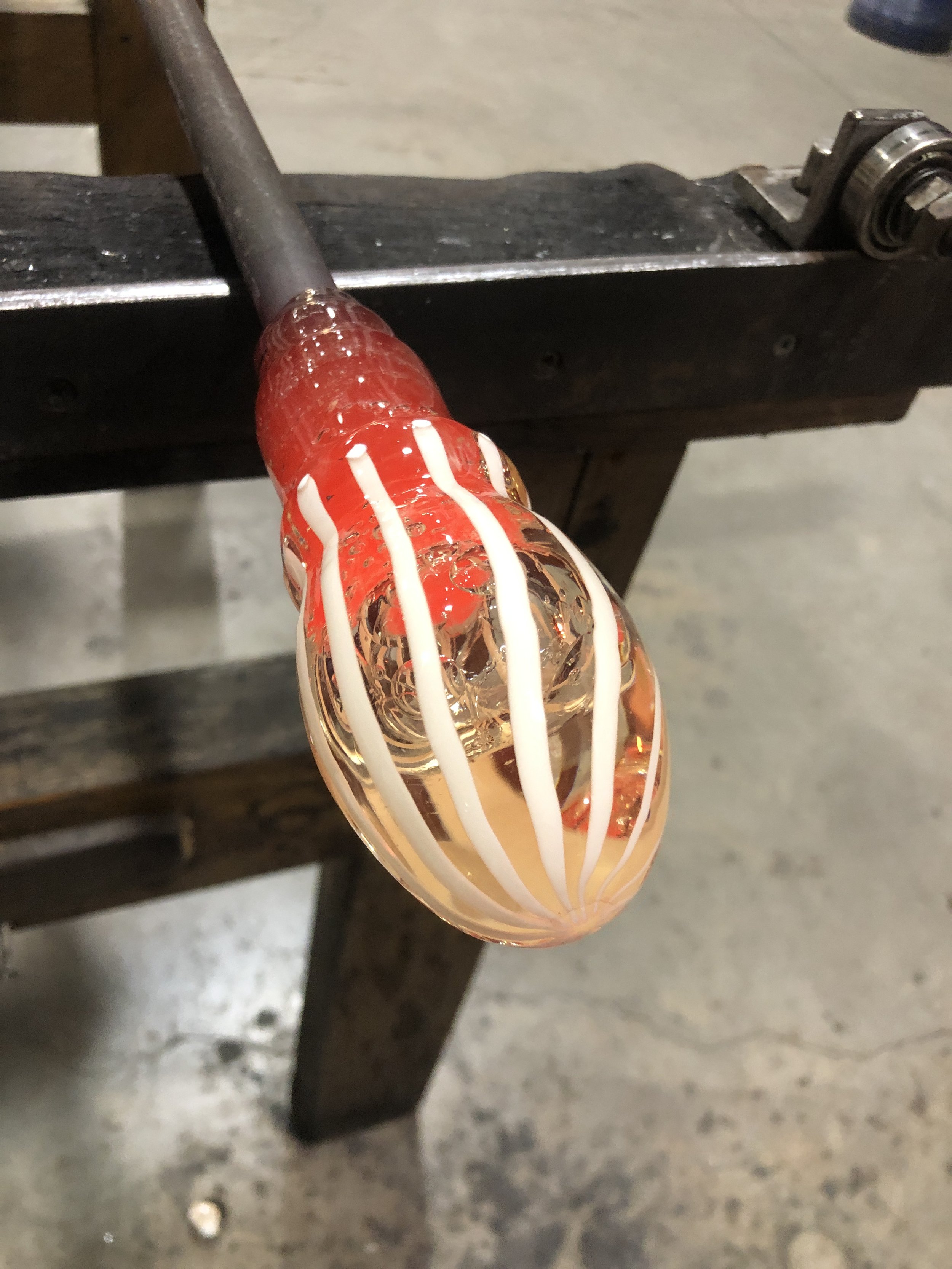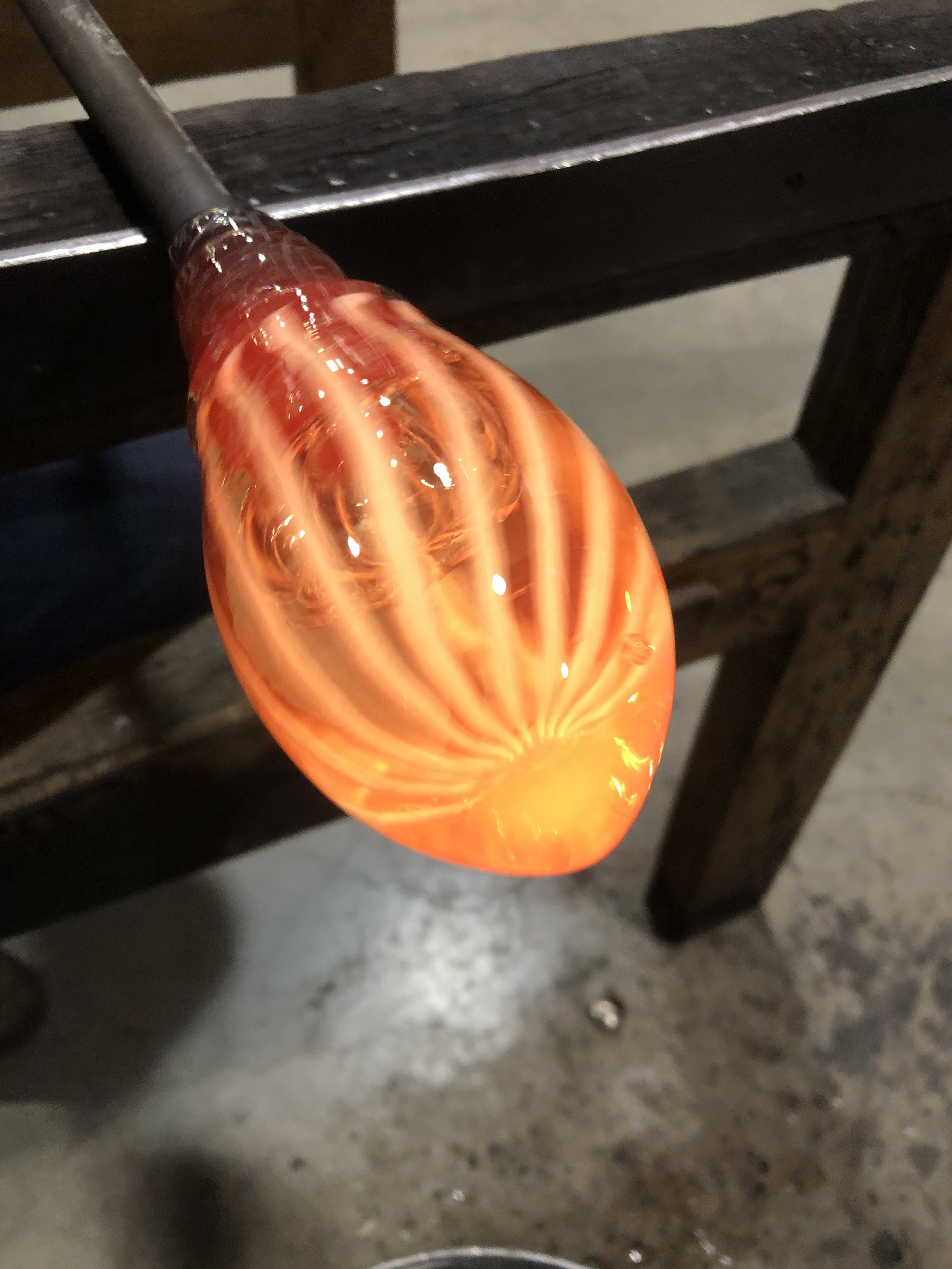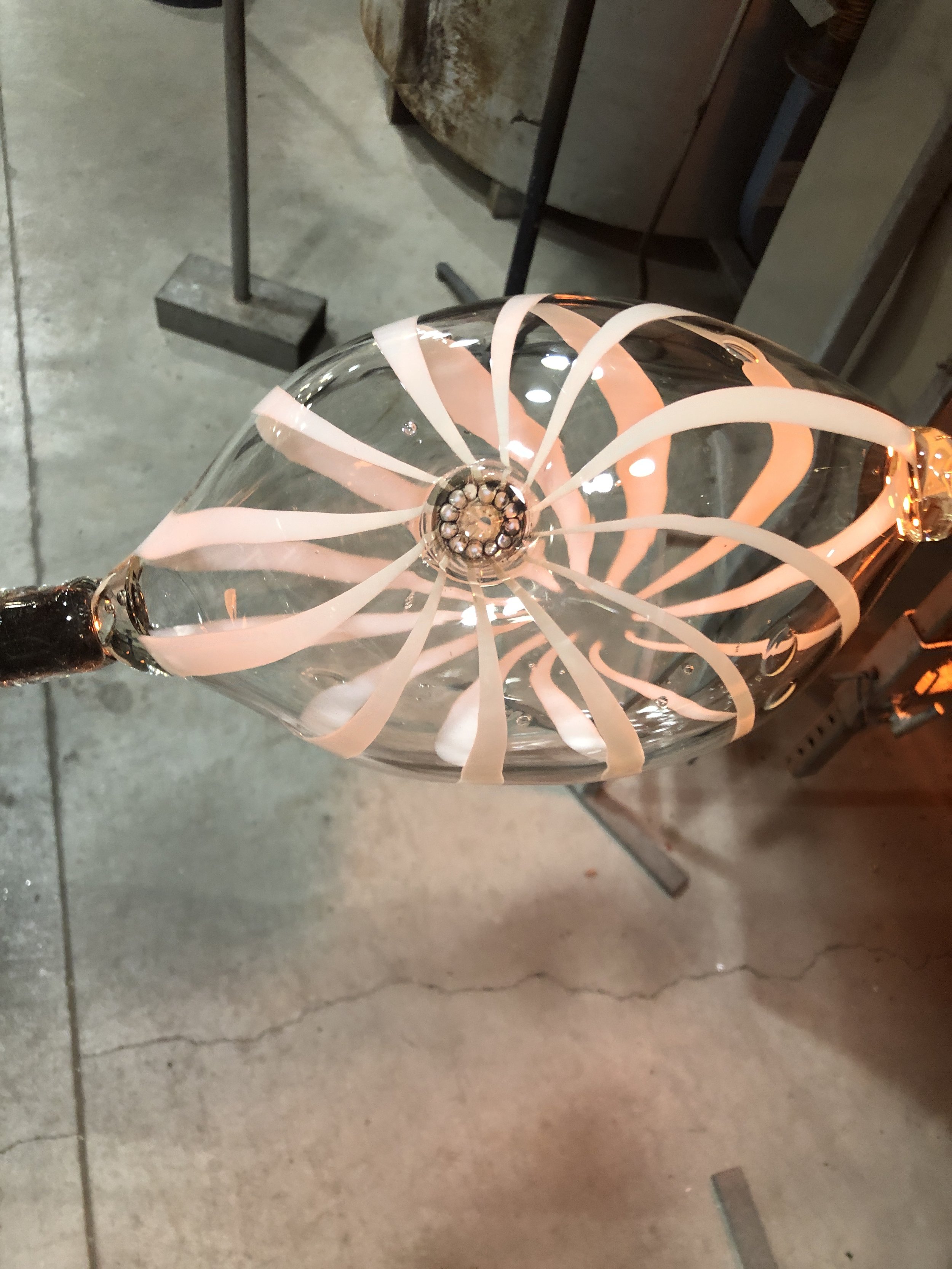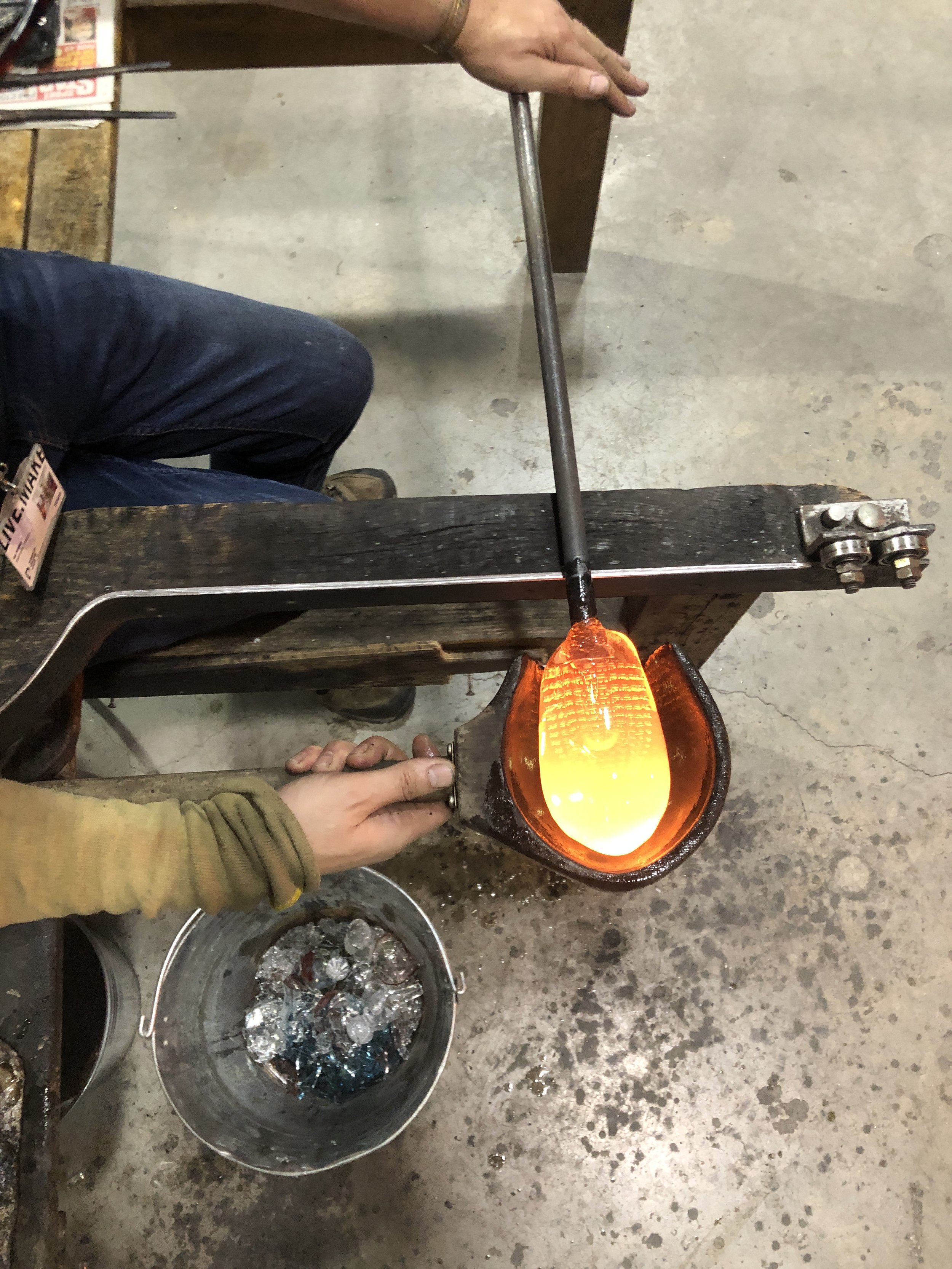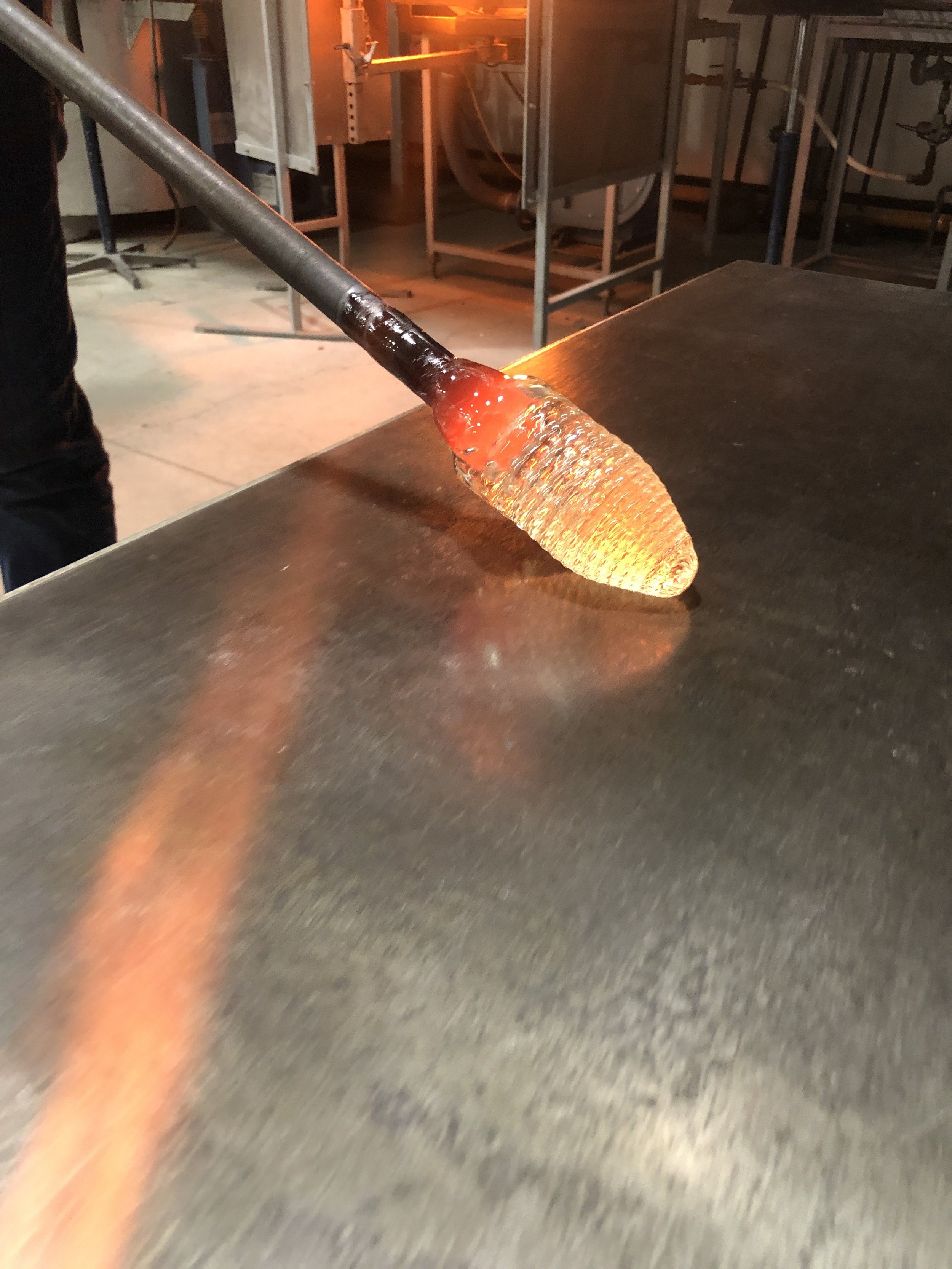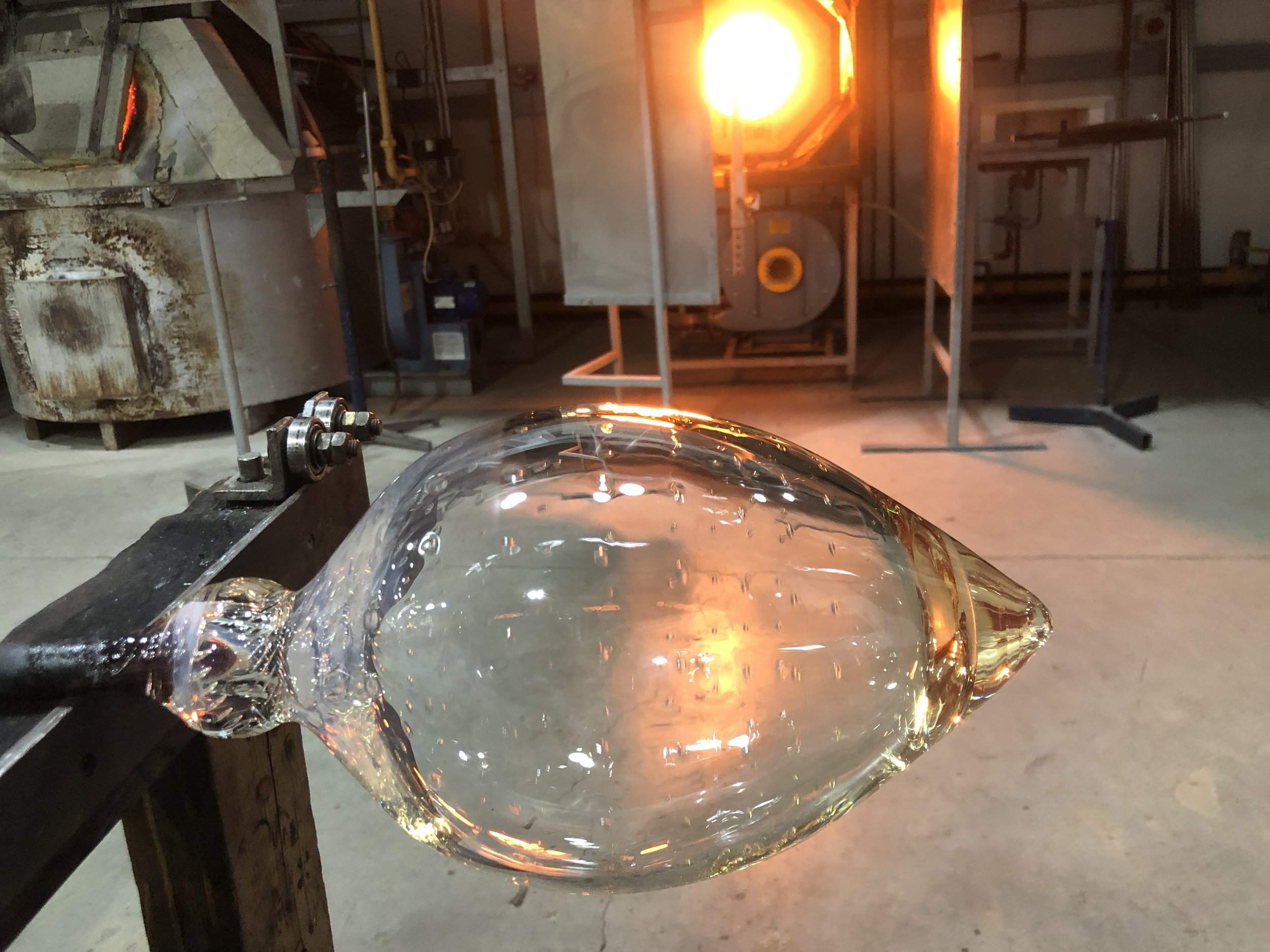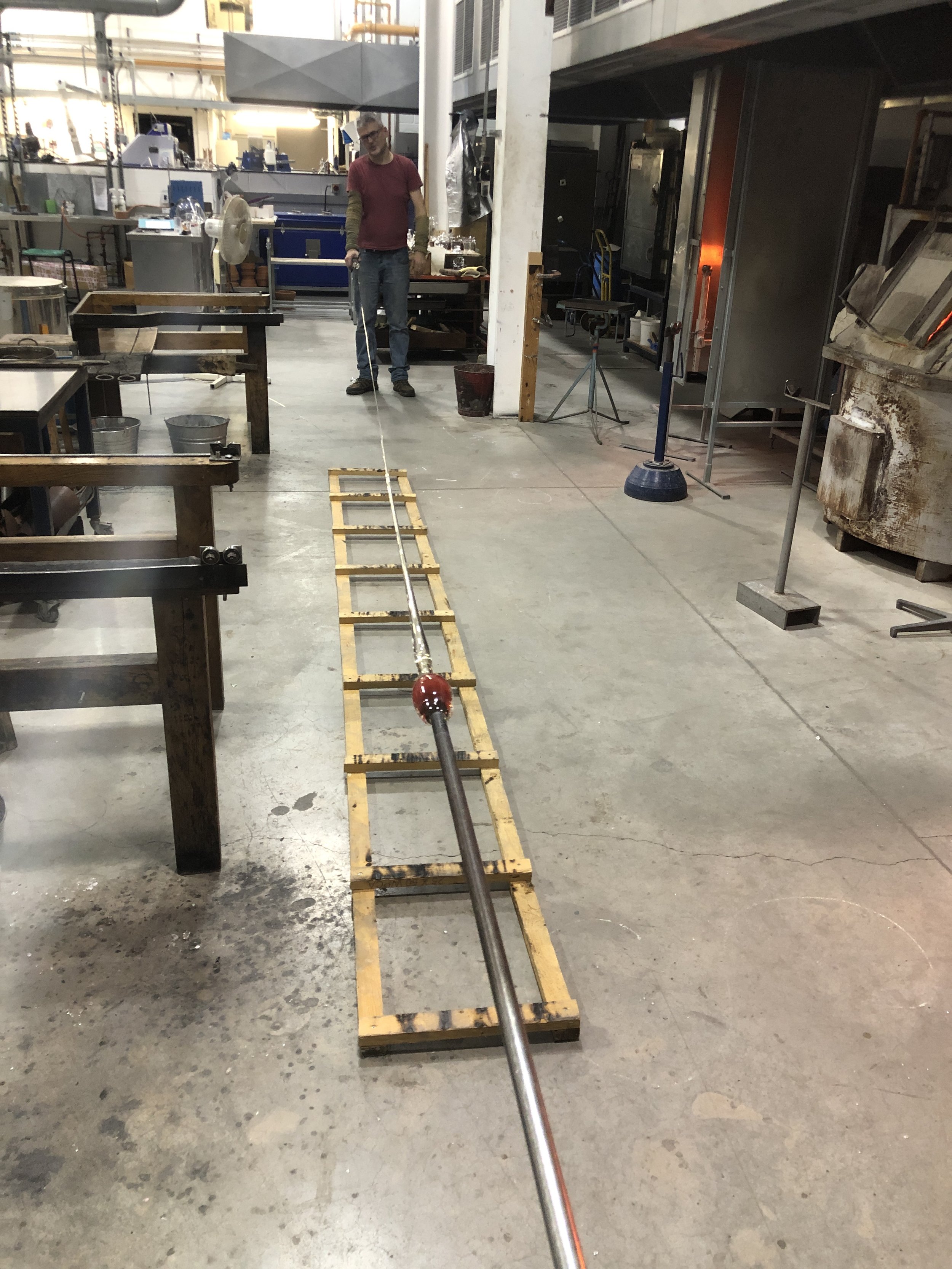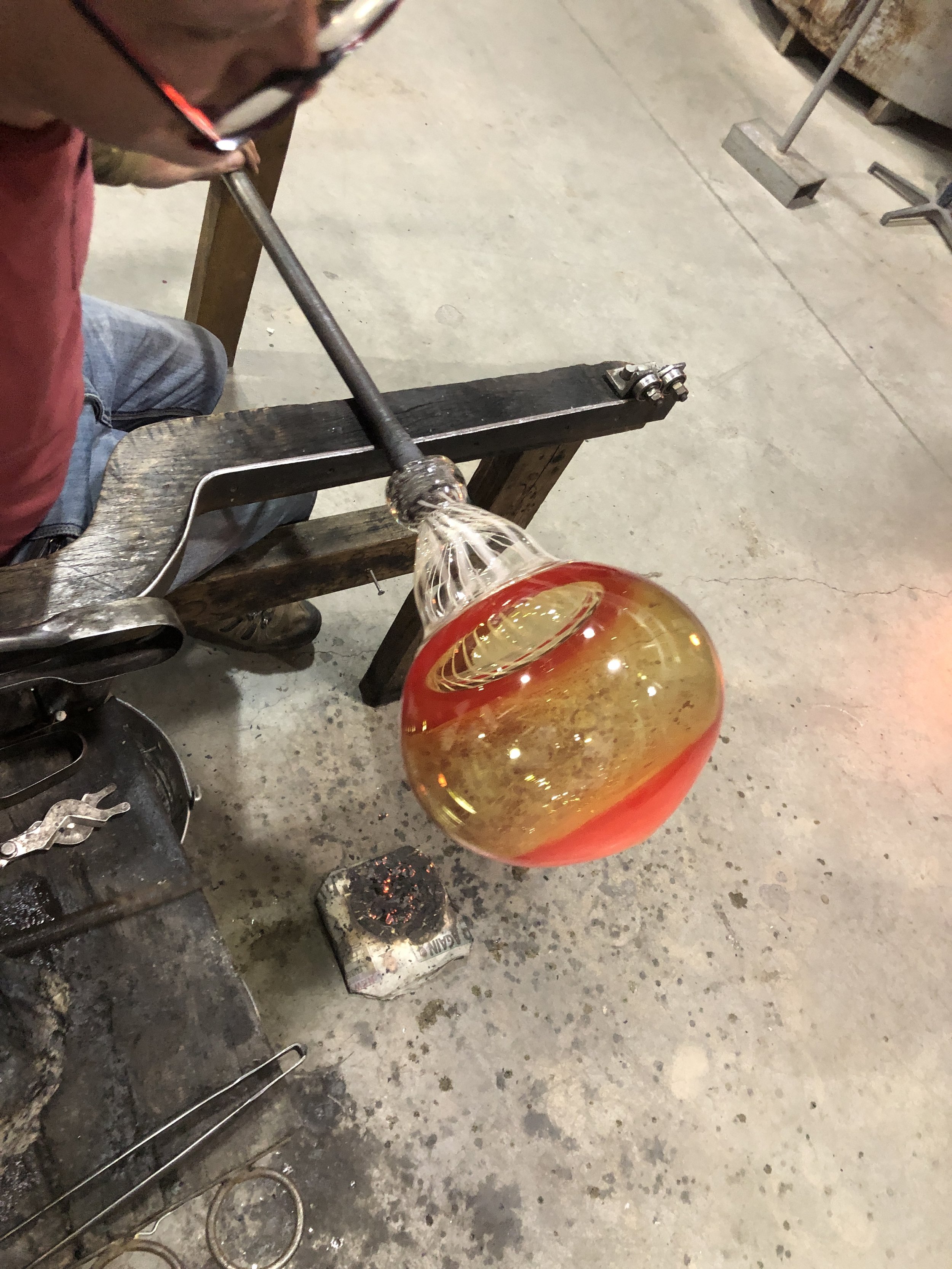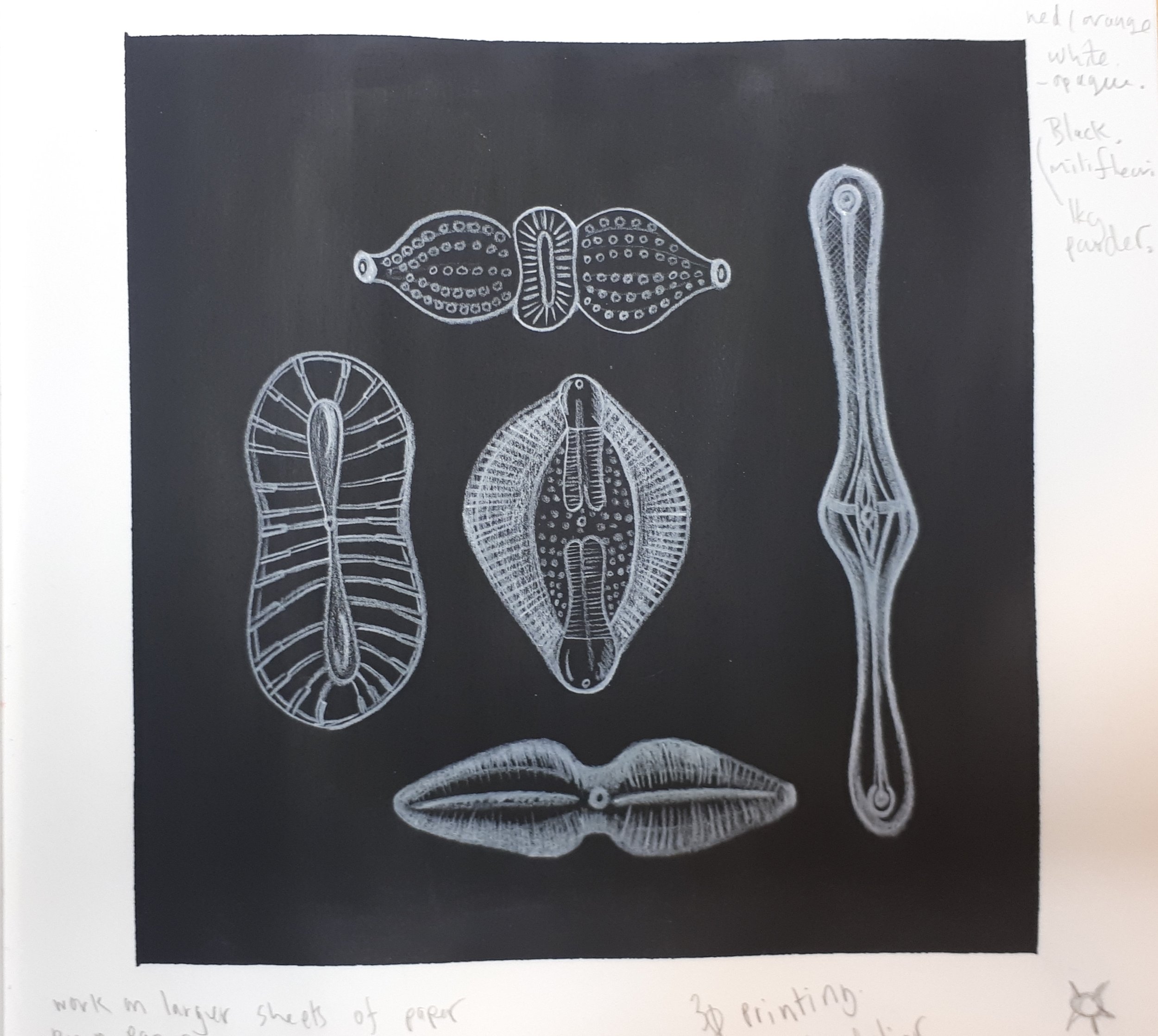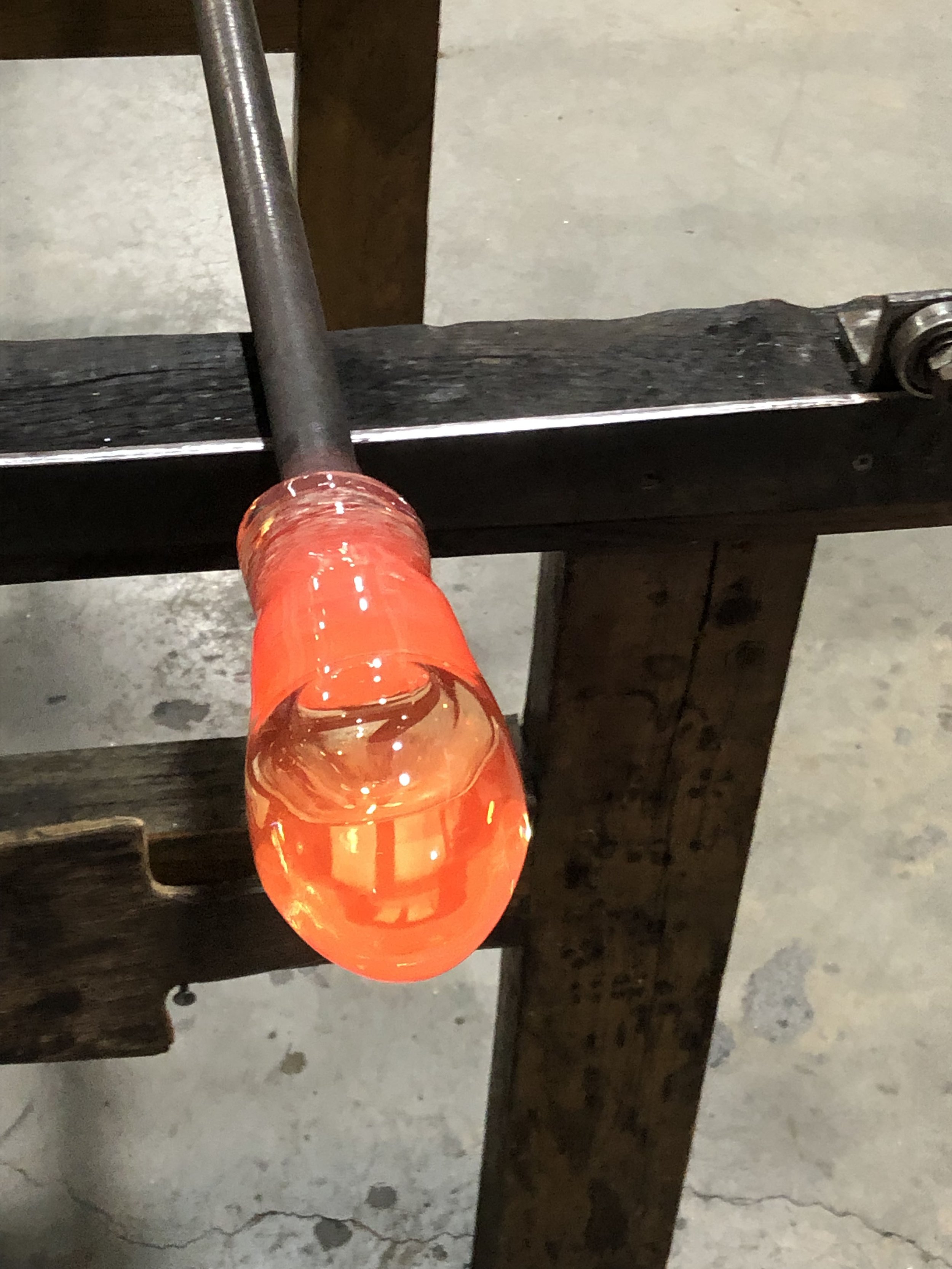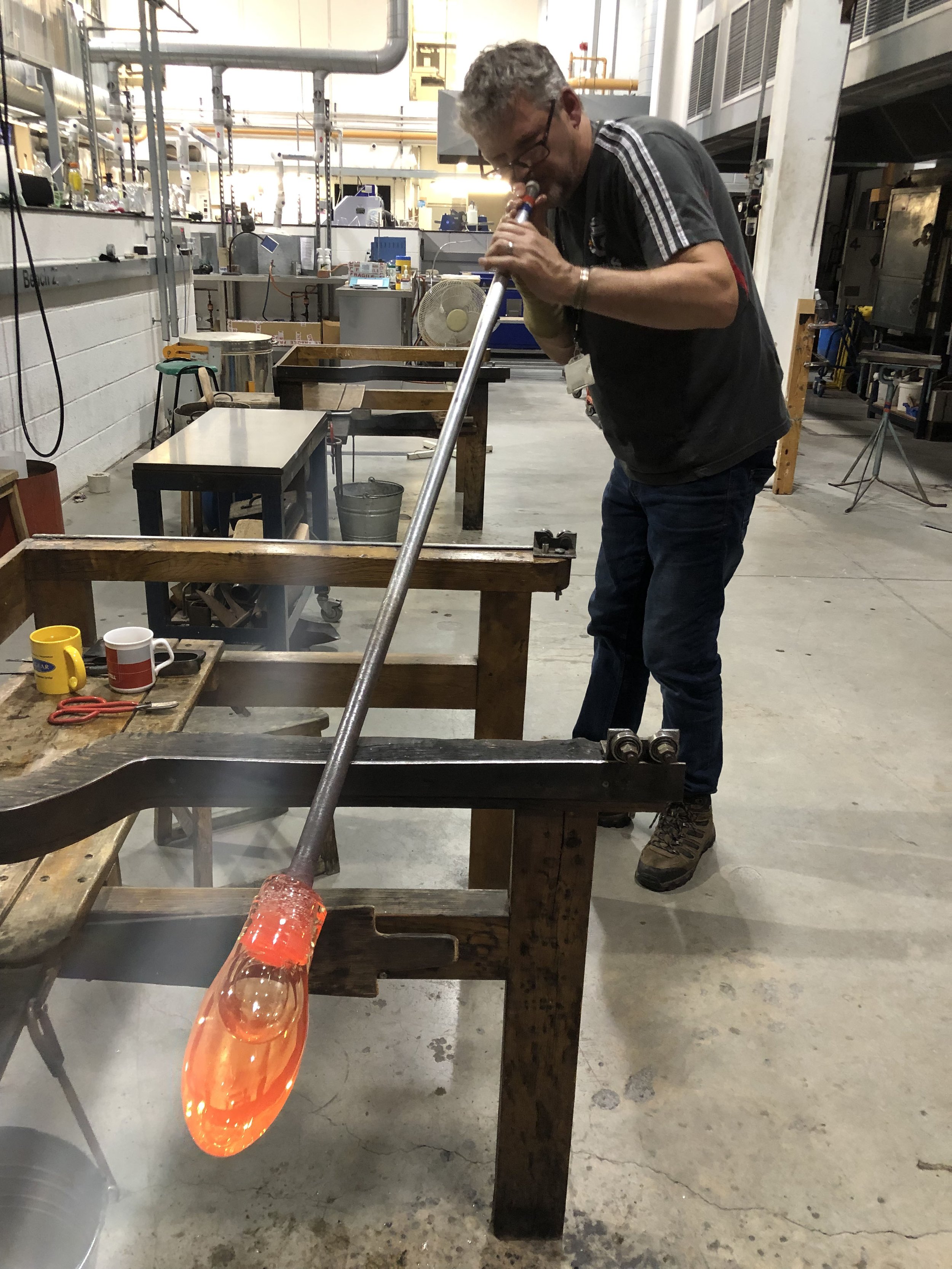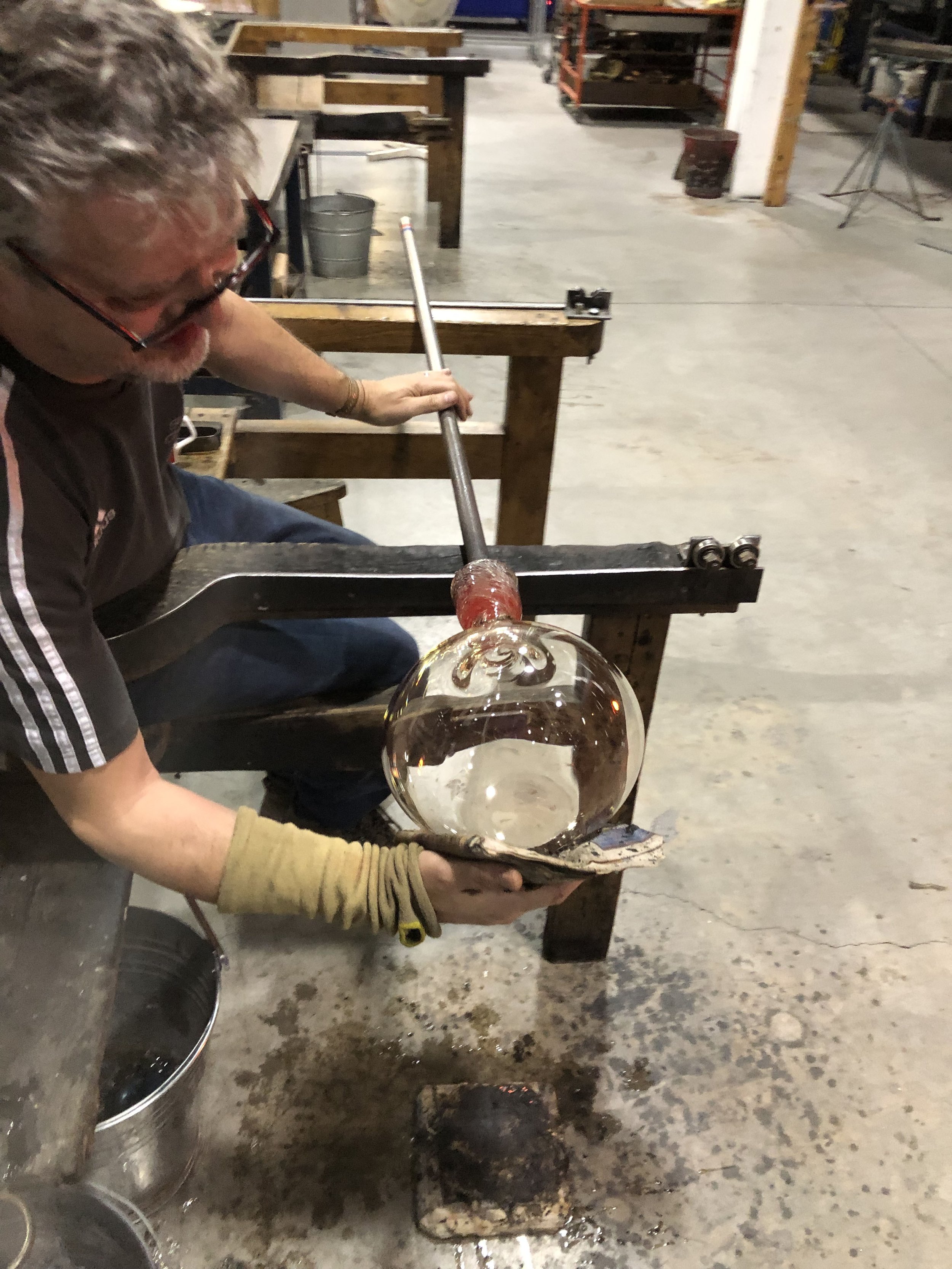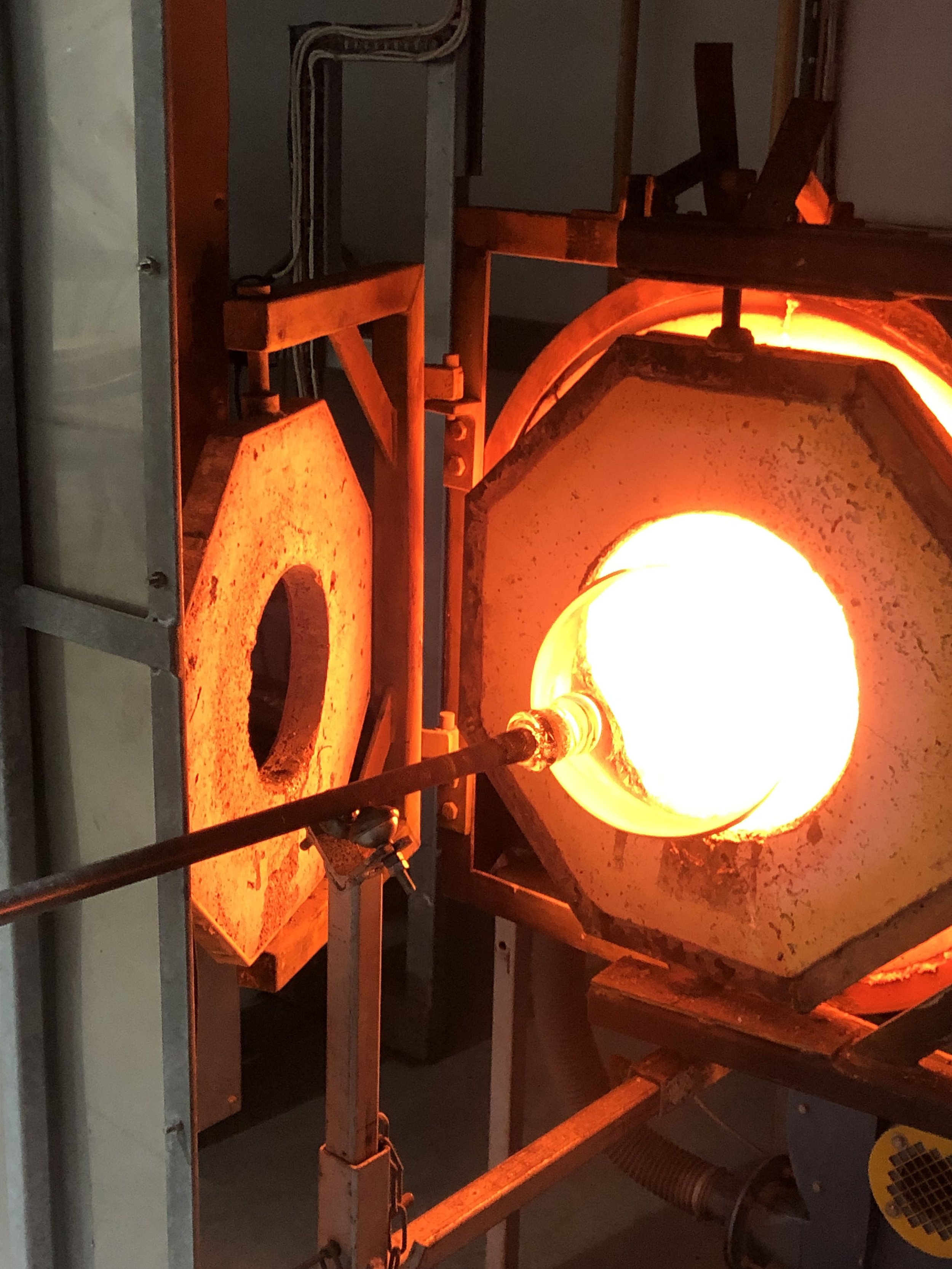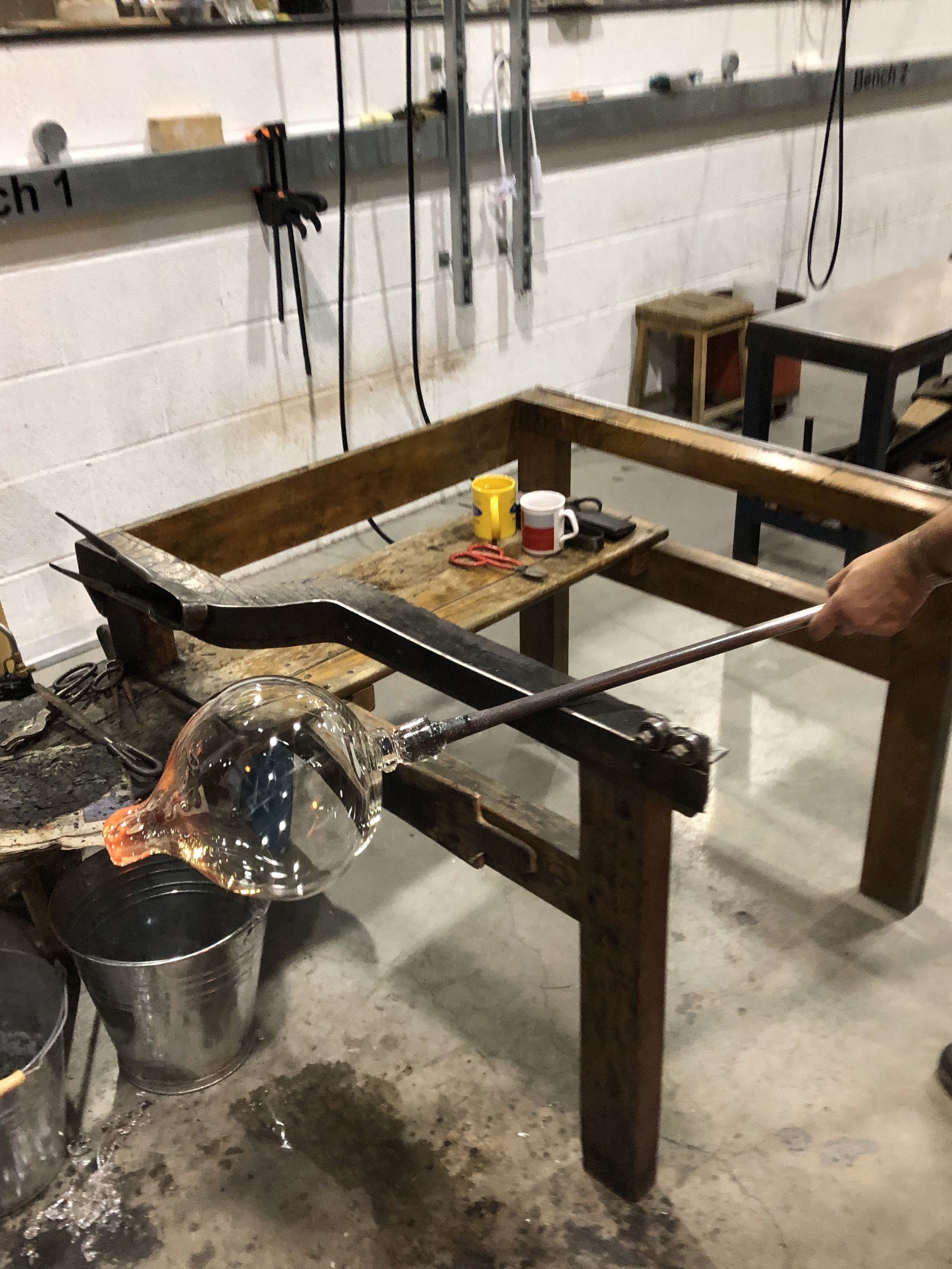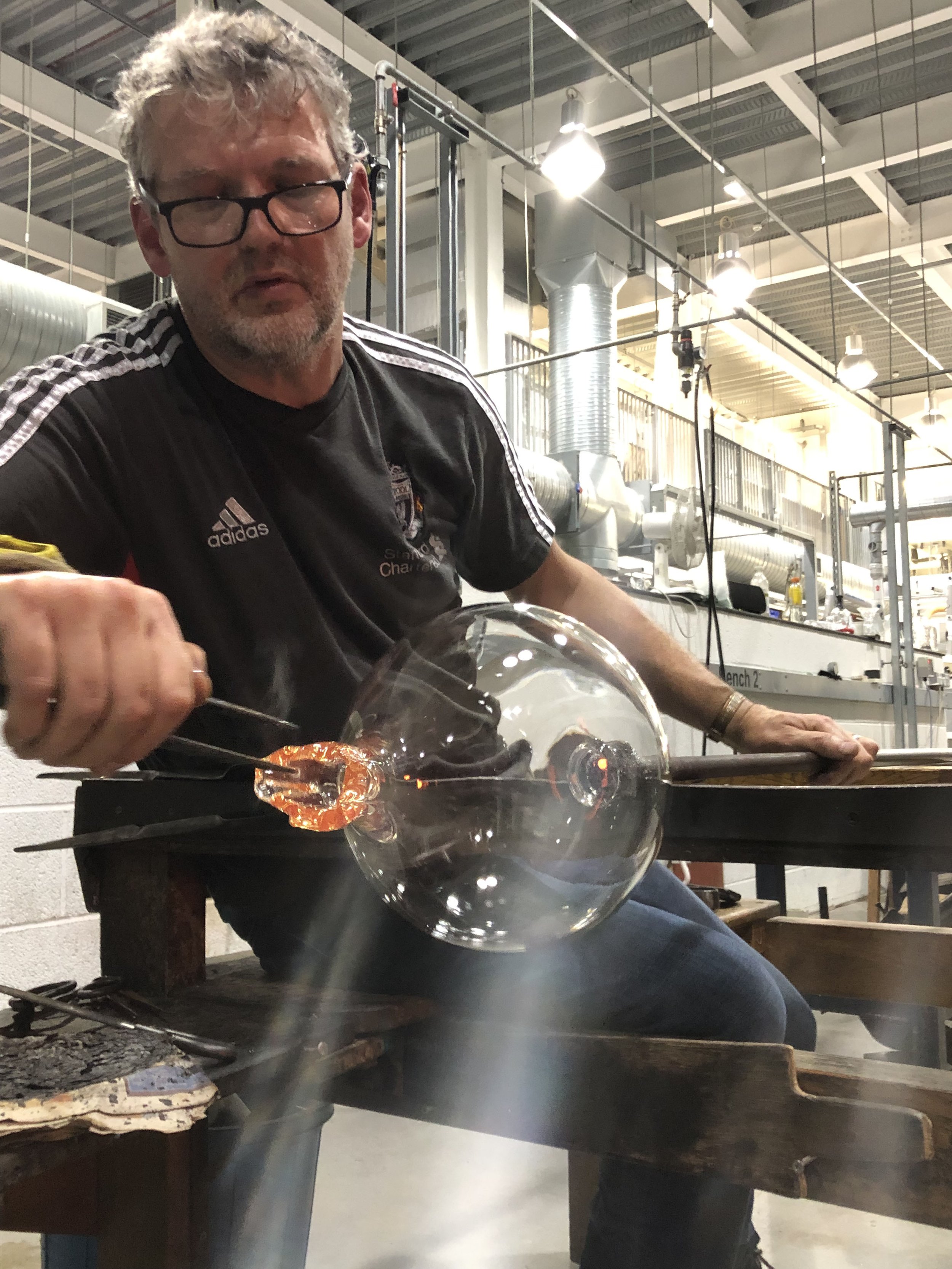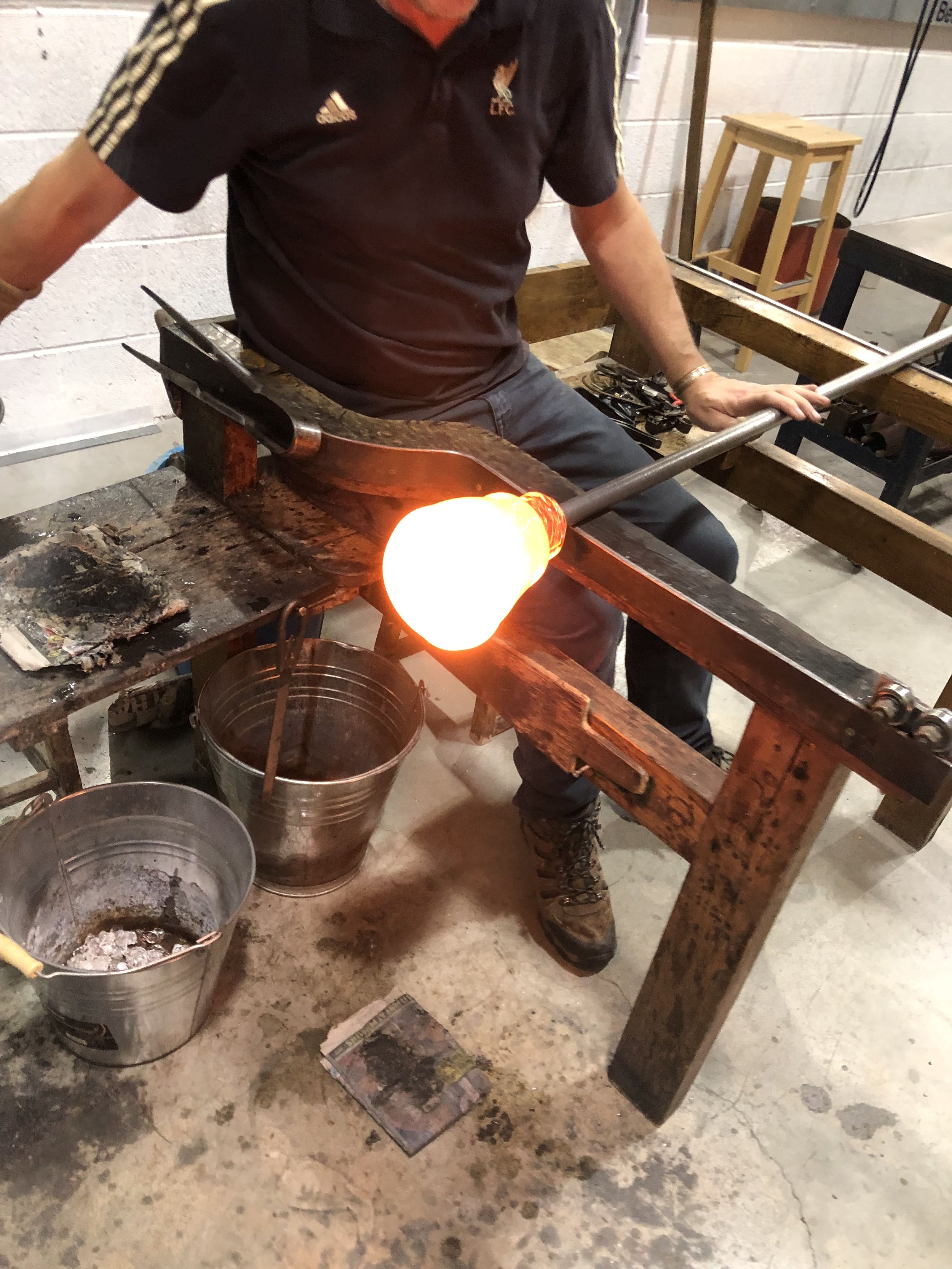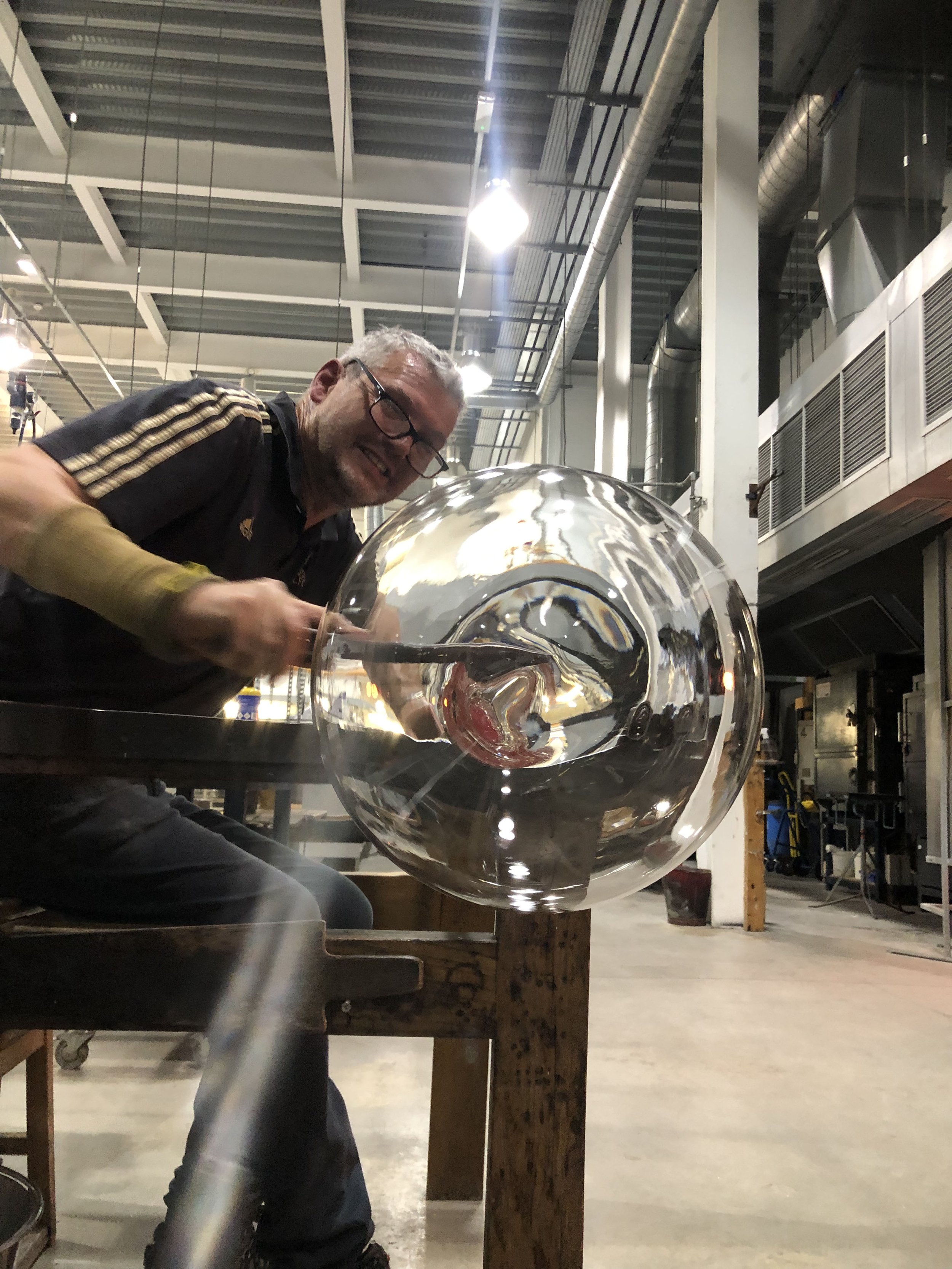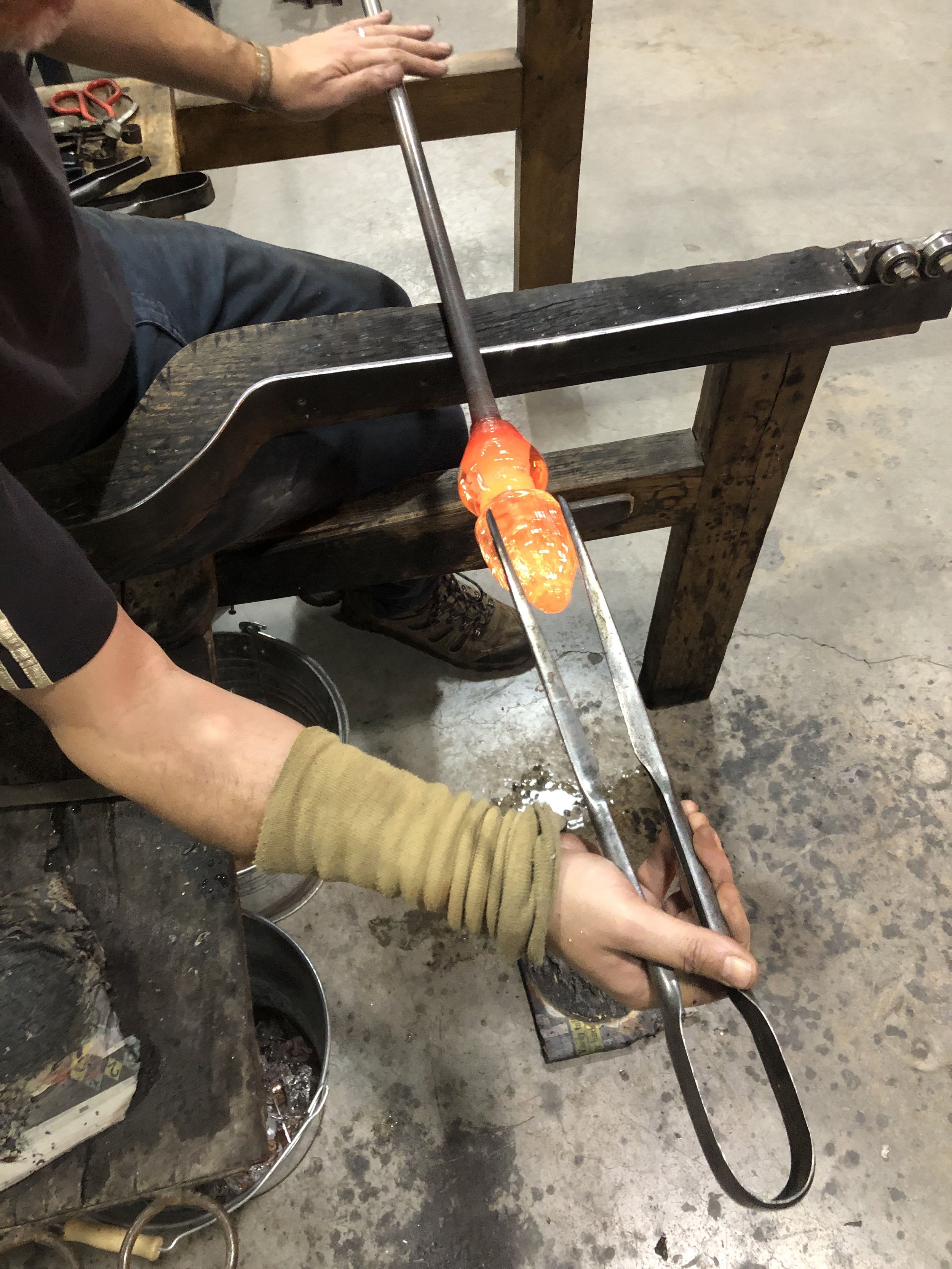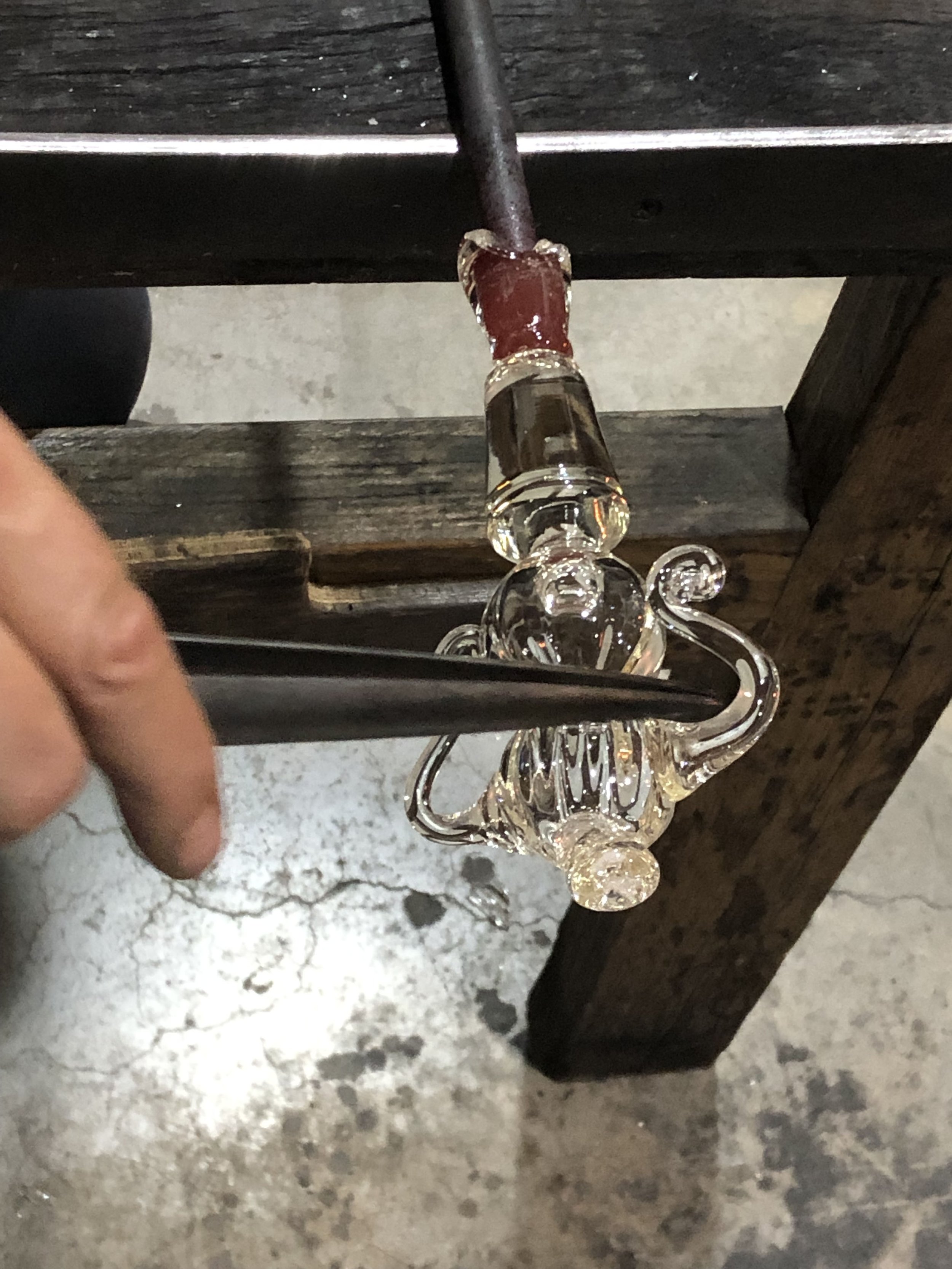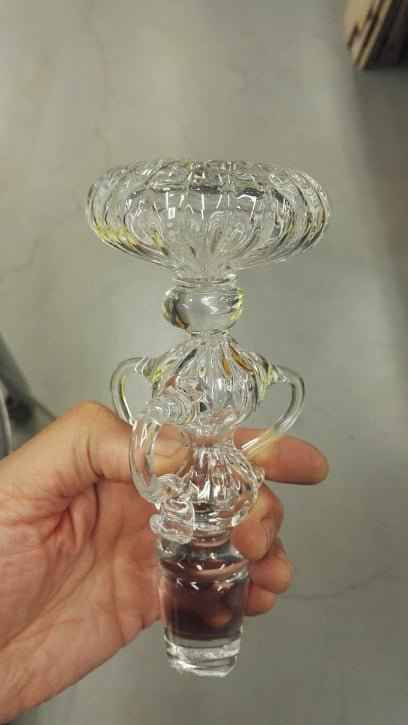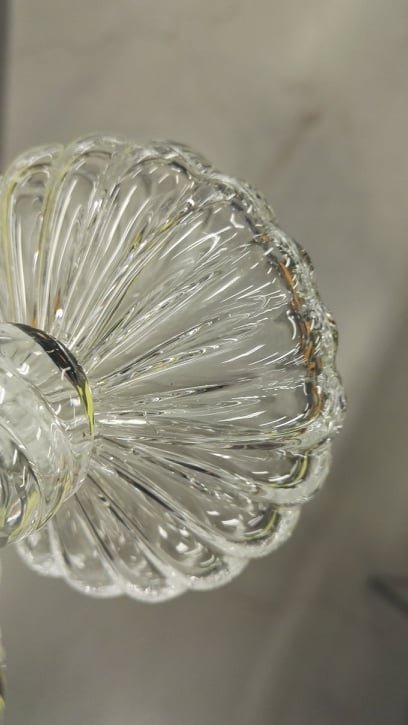Over the last few weeks, Ian has been experimenting with clear glass test pieces in the hot shop. He has been assisted by 1st year student Nathan Soper from Plymouth Collage of Art to help with the documentation and heavy lifting of the molten glass. This is a great opportunity for Nathan to experience an Arts Council funded artist collaboration and develop his professional practice experience.
Ian has been taking inspiration from my observational and concept drawings and using his technical skills of working with glass to create large, blown glass forms.
It’s been a long time since I attempted to make large mouth blown glass pieces, but I find myself inspired to make this body of work as large and as uncompromisingly ambitious as possible. I can imagine the results of our collaboration floating in water – perhaps at the old head office lake of Pilkington Glass in St Helens, where I started my career 40 years ago as an engineering craft apprentice.
At my age I will need help to carry the weight of the hot molten glass I need, so I have enlisted the help of one of our 1st year students, Nathan Soper, who has kindly agreed to work with me and also document the hot glass development work I am doing in response to Emma’s drawings.
The wonderful thing about working with Emma, is that the integrity of the concept, is not side-tracked or compromised by the technical skill of the glassmaker. I’ve always felt that in on too many occasions, sculptural work made exclusively by glassblowers tends to be rather inferior in my opinion, stuck in a kind of ‘cultural limbo’ somewhere between Art and Craft, not quite achieving quality as either.
This collaboration with Emma is wonderful because the conceptual thinking and the drawings that she makes are straight from her imagination, with an understanding of glass, but without the many years of training and experience that point a specific way to how things are done. For the first time since I was a student, I have the freedom to imagine making anything, without limits, but this time with over 30 years of tacit skill as a glassmaker at my disposal.
Ian Hankey MA(RCA)
